- Author Matthew Elmers [email protected].
- Public 2023-12-16 21:49.
- Last modified 2025-01-24 09:17.
Previous article:
Search and Neutralize: The drone fight is gaining momentum. Part 1
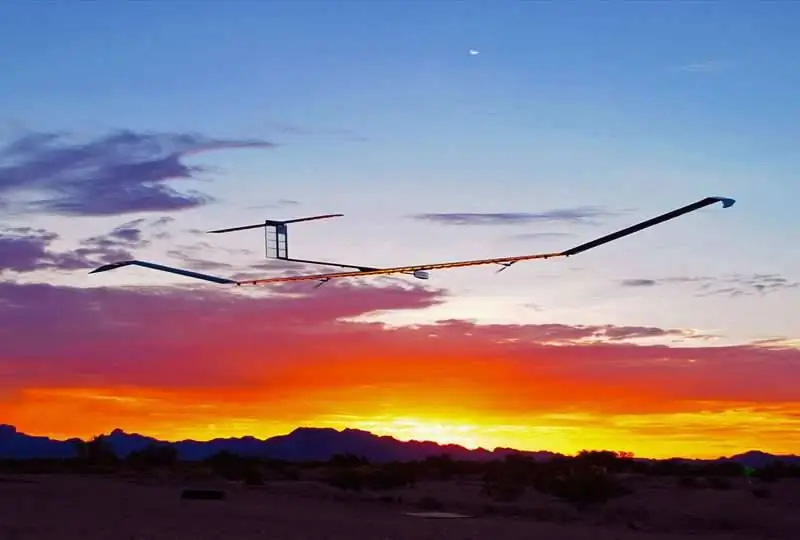
The solar-powered Zephyr drone was developed by Airbus DS. Can stay in the air for months
It is clear that the proliferation of small-sized UAVs, which can be purchased easily and cheaply, are easy to use and provide, although rudimentary, but still provide strike and reconnaissance capabilities, are of great concern in ensuring national security or countering threats emerging on the battlefield. Of course, these threats can be countered by using new technologies or improving existing ones, but more and more sophisticated UAVs and the principles of their combat use are already looming on the horizon, and, most likely, in the future they will become a real headache for defensive systems.
Indeed, even larger UAVs that already exist, ranging from tactical systems deployed at the brigade level, for example, Shadow from Textron Systems, medium-altitude platforms with a long duration of flight of the MALE category, for example MQ-9 Reaper from General Atomics Aeronautical Systems, and ending with high-altitude platforms with long duration HALE category flights such as Northrop Grumman's RQ-4 Global Hawk can pose a problem to air defense systems.
Despite the fact that the flight characteristics of these drones - speed and maneuverability - do not allow them to avoid defensive measures for sure, many of them have relatively weak radar and thermal signatures, and in the case of HALE category platforms, they are able to operate at the extreme ranges of many radars and missiles. complexes. However, it is probably more important that the functionality and effectiveness of the onboard load that these systems can carry is increasing more and more, which allows them to perform, in particular, their reconnaissance tasks at distances and heights out of the reach of air defense weapons, both in terms of detection and in terms of destruction …

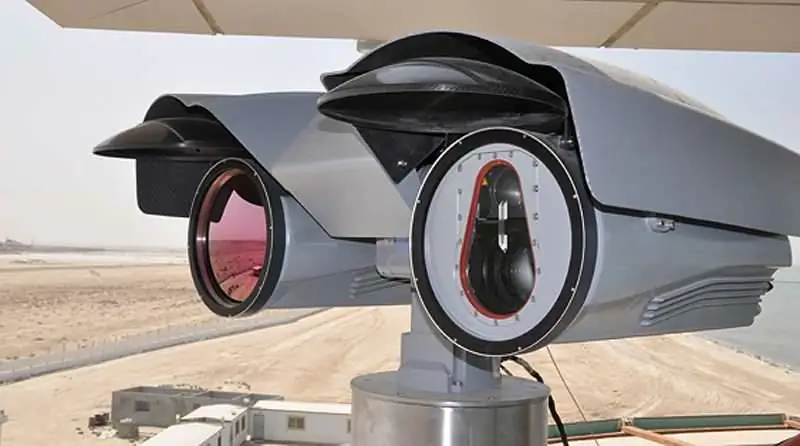
The SPEXER 500 radar (top) and the Z: NightOwl infrared camera, developed by Airbus DS, are designed to combat drones
Unmanned aerial vehicles (UAVs) can create significant problems for air defense systems and if they are treated in the same way as manned vehicles of the latest and next generation, it may well turn out that they are more difficult to detect and destroy - their design does not provide for the placement of pilots, and this allows the platforms to be reduced in size and to increase their maneuverability.
The new promising ultra-HALE drones are even more problematic. Airbus DS's solar-powered Zephyr drone has flight durations measured in months and can fly at altitudes over 21 kilometers. Despite its 23 meter wingspan, the composite craft has a small effective reflective area (EIR) because its solar propulsion system has a weak thermal signature and is therefore difficult to detect.
Some armed forces recognize that many anti-aircraft systems are capable of effectively detecting, tracking and hitting UAVs of the current generation, and therefore are looking for ways to defeat such systems due to the ingenious principles of combat using many systems of the same type at the same time.
For example, the so-called "swarming" of systems, when a large number of drones work together to achieve their goal, can create big problems for the vast majority of defensive systems.
From the very beginning, this approach, based on a massive drone attack, was based on the fact that many platforms would be sacrificed to achieve the objectives of the combat mission.
Within the framework of the LOCUST program (Low-Cost UAV Swarming Technology), the US Office of Naval Research (ONR) is developing a technology for the collaboration of many drones. The tubular rail container launcher will launch small drones in rapid succession from ships, combat vehicles, manned vehicles or other uninhabited platforms. After launching a "swarm" (or, if you prefer, a "flock"), the UAV works independently, the drones exchange information with each other in order to complete the assigned task.

Video demonstration of the LOCUST project. Coordinated flight of nine drones
Currently, ONR is using the Coyote UAV as a test model. This unit has foldable wings for easy storage and transportation. At the beginning of 2015, demonstration flights were carried out at several test ranges, during which launches of a vehicle equipped with various payloads were carried out. In another demonstration of this technology, nine drones independently synchronized and completed a group flight.
A key capability of the LOCUST project is a high level of flock autonomy, which allows them to perform tasks without operator intervention and thus counteract any jamming of communications that may be used against them.
In addition, according to ONR, the swarm will be able to "self-medicate", that is, independently adapt and configure itself to further perform the task. The current goal of the program is the sequential launch of 30 UAVs in 30 seconds. ONR intends to conduct sea trials of the LOCUST flock in the Gulf of Mexico in mid-2016.
In August 2015, the Defense Advanced Research Projects Agency (DARPA) of the US Department of Defense also launched its Gremlins program. This project provides for the deployment of groups of small UAVs from large aircraft, such as bombers or transport aircraft, as well as from fighters and other small aircraft, even before entering the reach of enemy air defense systems.
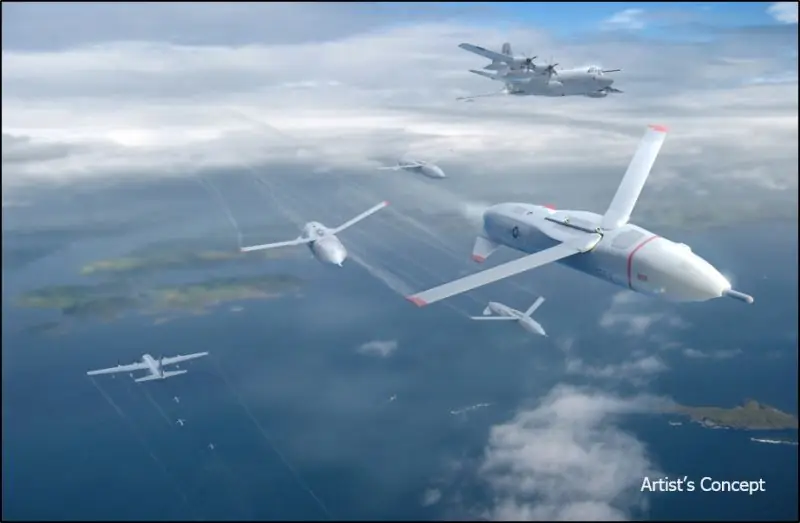
The Gremlins program is being developed by the US Department of Defense Advanced Research and Development Agency (DARPA)
This program provides that after the completion of the mission, the C-130 transport aircraft in the air could take the so-called "Gremlins" back on board. It is planned that the ground teams will be able to prepare them for the next operation within 24 hours of their return.
DARPA mainly solves the technical problems associated with the reliable and safe aerial launch and return of many drones.
In addition, the program is aimed at obtaining not only new operational capabilities and the development of a new type of air operations, but also in the long term and at obtaining a significant economic effect. The program also aims to "extend the lifespan of Gremlin drones to approximately 20 missions," according to a FDA spokesman.
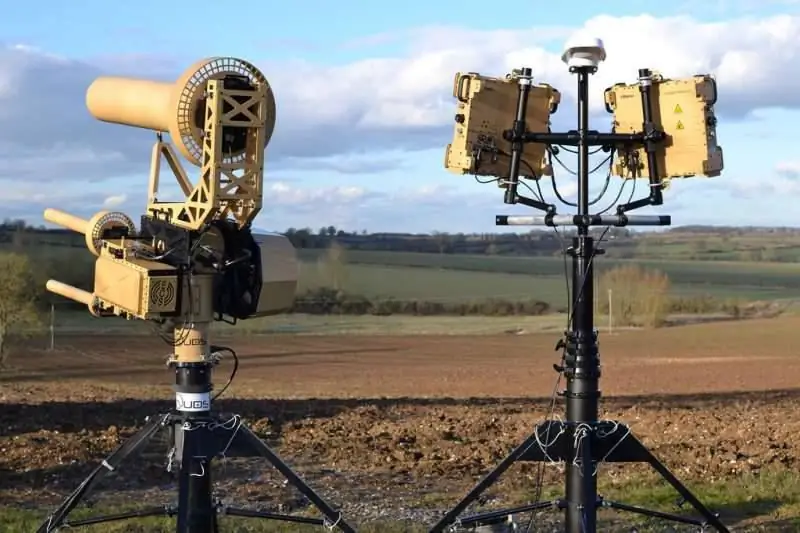
AUDS by Blighter Surveillance Systems uses a ground surveillance radar in conjunction with an optoelectronic station and an electronic jammer
Additional features
Returning to Airbus DS, we note that its UAV development roadmap includes improving the accuracy of systems and introducing new features, such as "friend or foe" type functions, which can be useful in reducing the frequency of false alarms and is attractive to operators using the system in complex airspace. The company is also considering using less advanced systems to reduce costs and expand its potential customer base, although in this case, the accuracy of the platforms is likely to decrease.
RADA Electronic Industries has focused its UAV efforts to develop a programmable solution based on existing radars.
“We have designed a radar that can detect very small objects, ranging from very low speeds, Doppler speeds, to high speed targets flying at the speed of sound and above. This radar can detect people, cars, UAVs, fighters, missiles, it depends on the radio frequency mode that you set, - explained the head of business development of this company Dhabi Sella. - In the case of our multitasking programmable radar, this means you just press a button and there is no need to change the software. By setting the appropriate parameters, you get what you need."
Semiconductor AFAR radars from RADA are designed for stationary and mobile use. The company offers two families: compact hemispherical radars CHR (Compact Hemispheric Radar) for short-range detection and installation on vehicles and multitasking hemispherical radars MHR (Multi-mission Hemispheric Radar) for fixed installation.
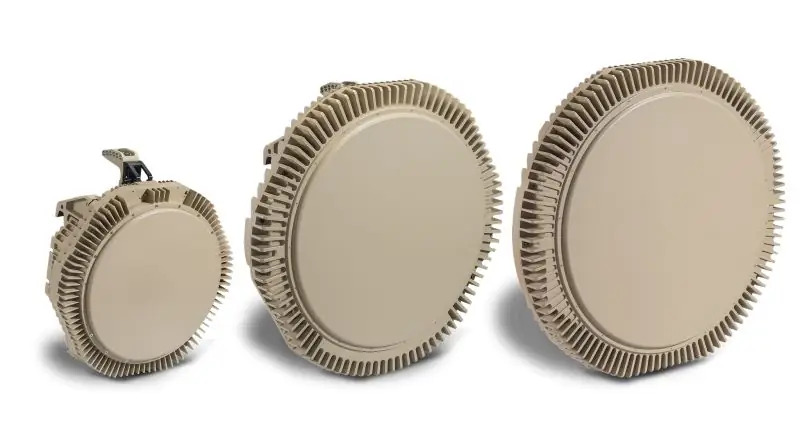
RADA Electronic Industries' MHR family of radars
The company also upgraded the MHR family, which includes the RPS-42, RPS-72 and RPS-82 radars, also known as pMHR (portable), eMHR (enhanced) and ieMHR (improved enhanced). According to the company, the most advanced radar ieMHR is capable of detecting mini-UAVs at a range of 20 km.
Sella said finding and tracking a UAV is no easy feat. “It's not straightforward … to locate mortars, small arms or RPGs and may even be more difficult, but we have dealt with it. UAV countermeasures are within the capabilities of these radar systems. In any case, UAVs are specific targets with unique features, which we denote by the English abbreviation LSS (low, small, and slow - low, small, slow). It is a problem to identify very small objects with very little EPO flying very low and close to the background noise of the earth's surface. Sometimes they fly as fast as other vehicles, such as cars. It is a difficult task to find them among all the hindrances. Another problem is that they fly like birds, they are perceived as birds and the user usually wants to distinguish between what we call annoying targets."
Sella explained that one method of determining if a track is a drone is to focus radar energy to determine if a target has propellers, adding that, in addition to hardware, signal processing and algorithm development are key to the systems' capabilities.
Syracuse-based SRC combines a range of field-proven electronic warfare systems in its combined baseline approach to provide counter-drone capabilities for both zone defense and agile combat. Although the latter are now often considered a secondary task for anti-UAV systems, their importance is steadily increasing.
"Small UAVs will have the ability to perform information gathering or aerial explosives," explained David Bessie, director of business development at SRC. "Enemy UAVs not identified by the air defense system can affect the combat operation, or they will provide the enemy with information on your positions, or they will strike an air strike on your infrastructure or maneuvering forces."
“Our approach uses existing, field-proven technologies, as well as software that integrates them into a single base system. The advantage of this approach is that we can use our customer's systems that are already in operation in order to lower the total cost of ownership. We provide field-proven electronic warfare and radar systems and we will soon be able to offer a complementary direction finding station,”Bessie said.
“We believe that electronic warfare systems are essential to combat UAVs. Our electronic warfare systems can detect, track and classify unmanned systems, and then automatically neutralize them. If visual identification is required in order to determine the identity of the target, then a camera can be transferred to it. We can further enhance our detection, tracking and classification capabilities with our LSTAR airspace surveillance radar. It is also recommended to add high-resolution optoelectronic sensors for long-range visual identification.”
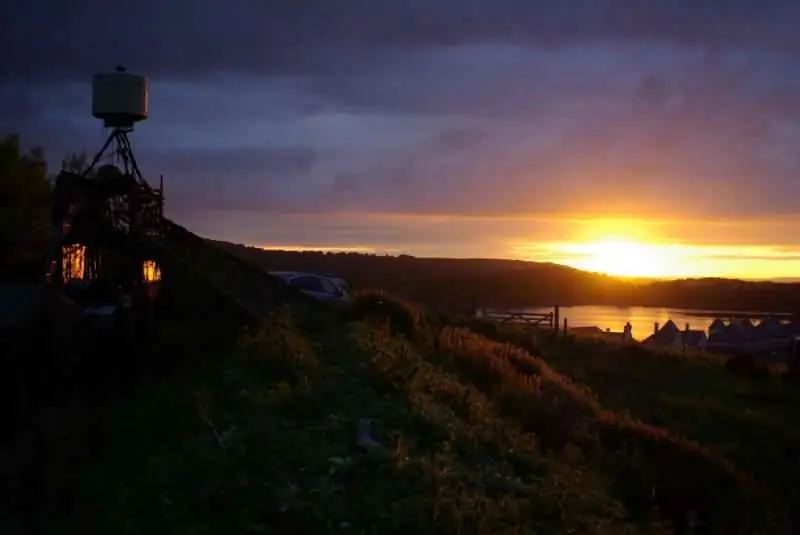

The LSTAR airspace surveillance radar performs very real security tasks. In the photo above, a radar protects the calm of the G8 summit held in the summer of 2013 in Ireland.
Lightweight and easy to transport, the SR Hawk Surveillance Radar, part of the LSTAR family of airborne surveillance radars, which all feature 360 ° 3-D electronic scanning, provides both 360 ° and sectorial scanning. The OWL multitasking radar features a hemispherical view from -20 ° to 90 ° in elevation and 360 ° in azimuth. It has an electronically controlled non-rotating antenna and an advanced Doppler signal processing mode that allows UAVs to be detected and tracked while counter-battery battles can be fought.
In addition to solutions based on radar and optoelectronic technologies, systems based on other principles are also being developed. Northrop Grumman has begun using the LLDR (Lightweight Laser Designator Rangefinder) technology to counter UAVs in its Venom system.
The company tested the Venom system as a drone fighter in the US Army's Maneuver-Fires Integrated Experiment (MFIX) exercise at Fort Silla in 2015. The Venom system was installed on an M-ATV armored vehicle of the MRAP category and successfully carried out identification, tracking and target designation of the UAV.
Venom with LLDR technology mounts on a versatile, gyro-stabilized platform. During the tests, Venom was tested as a system for combating UAVs from two machines. The system received external target designation commands, captured targets and tracked small low-flying drones. Also, the Venom system was demonstrated in motion with the control of sensors from inside the car.
It is worth noting that the LLDR2 laser designator was widely used in operations in Iraq and Afghanistan.
Visual detection
In order to meet the requirements of the Israeli Ministry of Defense, the Israeli company Controp Precision Technologies has developed a UAV detection system based exclusively on optoelectronic and infrared technologies.
The company's Tornado lightweight, fast-scanning infrared device uses a cooled medium-wave thermal imager (matrix specifications were not disclosed) mounted on a 360 ° turntable. The system can provide panoramic coverage from ground level up to 18 ° above the horizon.
In order to identify potential targets, the software algorithms of the system detect the slightest changes in the environment. According to the company, they automatically track any flying vehicle along its trajectory, flying at various speeds just a few meters above the ground. The system has continuous magnification for a clear image and can provide a track for every target.
According to Controp, the Tornado can monitor built-up areas with many interfering echoes, although they do not disclose detailed information on the characteristics, except that small UAVs can be detected at ranges measured in hundreds of meters, while large targets are detected beyond tens of kilometers.
Using audio and video signals, the system is able to provide automatic notification to the operator that a flying object has entered a predetermined "unmanned" zone. The system can be controlled locally or remotely from the command center, it can work both in stand-alone mode and as an integrated system that receives data from other sensors.
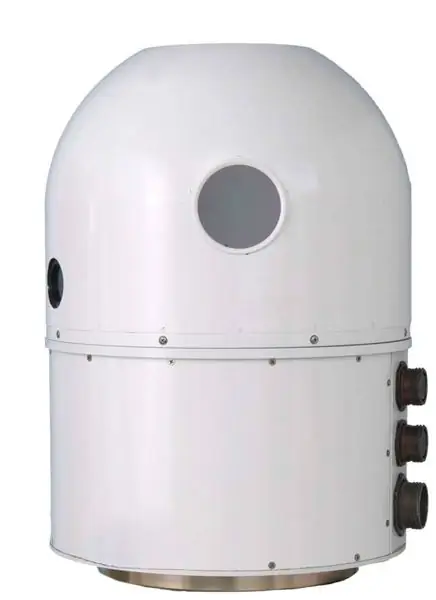
Israeli company Controp Precision Technologies gives drone detection system Tornado designation
The standard Tornado sensor unit weighs 16 kg, has a diameter of 30 cm and a height of 48 cm; although it is also planned to develop a smaller block measuring 26x47 cm and weighing 11 kg.
Consideration is being given to the inclusion of the visual detection and tracking function in the system, as well as the possibility of its connection to some anti-UAV systems. “Our Tornado system can only detect UAVs with an infrared camera. without using any radio frequency systems. The main advantage of the Tornado over RF systems is that the radars will work well in areas without interference, but when you are in an area with buildings and other infrastructure, the radars have problems detecting small UAVs. Our system consists of two main components, the first is an infrared camera that scans 360 ° and provides a panoramic image, the second is algorithms that allow you to detect small targets when they are in motion, explained the vice president of marketing at the company. Controp Johnny Carney. "Developing an algorithm is difficult because you want to detect a moving target, but exclude, for example, clouds and other moving objects."
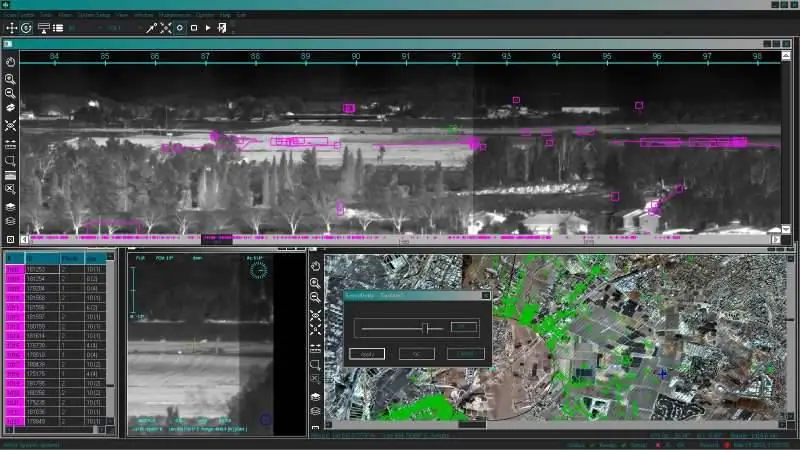
Typical Tornado operator display showing panoramic infrared image (top), panoramic infrared camera snapshot (bottom left) and satellite image of the corresponding ground area (bottom right)
“Tornado is a tracking system, and if you want to track the system and get location and range data, then you have to switch to another system to do some of the work … and if you want to track the target and see more details, then you have to use more. one optoelectronic system to receive a continuous video stream,”explained Carney.
However, the big drawback of the system is that it cannot distinguish, for example, birds the size of a drone from real targets, for this an operator is needed.
Carney believes that few effective solutions have been developed that can provide all aspects of detection and tracking required by potential customers, while adding that there are extremes in the requirements for systems. From individuals who want to receive warning signals of UAVs flying over their property, to the protection of national infrastructure and facilities on the battlefield. “For example, some militaries want systems that can prevent UAVs from flying over their combat vehicles. There are different ways to meet the requirements, it also depends on the financial resources that you can spend, and this is one of many problems. Of course, if you want the best protection, you must use a combination of radar and infrared for detection, and an infrared and semiconductor camera (CCD camera) for tracking."
Carney believes that it is possible to enable analytics that could automatically determine the type of target, but added that he would never get 100% accuracy, since there is always the possibility of "running into" a drone that looks like a bird, and therefore to help operators will always need advanced sophisticated recognition algorithms.
CACI's SkyTracker system is designed to provide passive detection through what the company describes as an “electronic perimeter”. This system can work continuously in any weather.
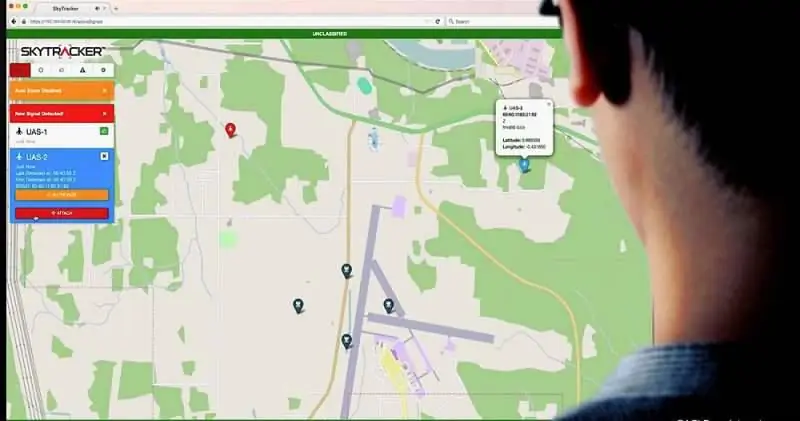
SkyTracker system interface
The SkyTracker system uses several sensors that can detect, identify and track UAVs over their radio control channels. The use of multiple sensors makes it possible to determine the position of the UAV due to the triangulation method and accurate geolocation. In addition, SkyTracker can determine the location of UAV operators.
As already noted, the small size, weak thermal signature, the surrounding space with a lot of interference and complex flight paths make the fight against UAVs a very difficult task.
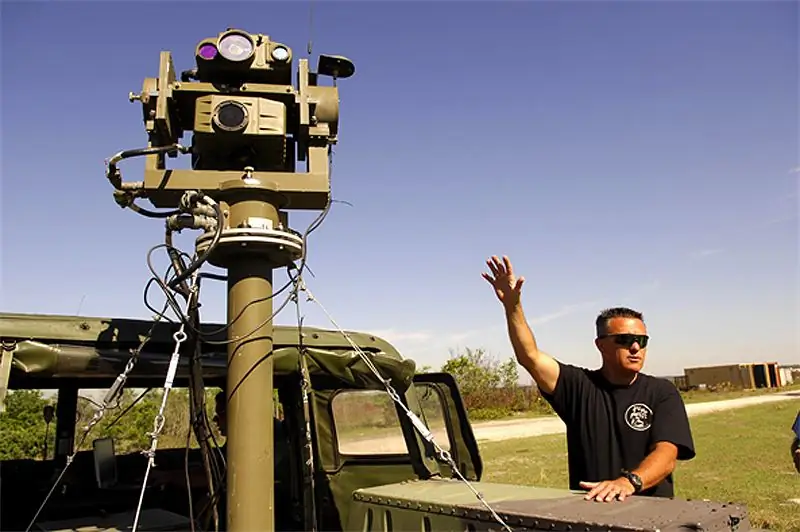
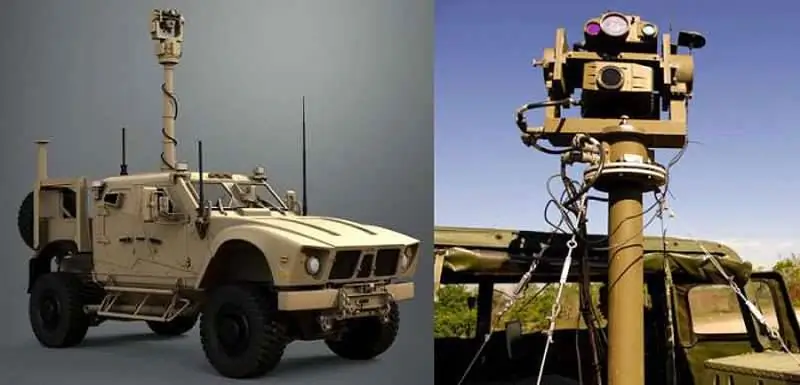
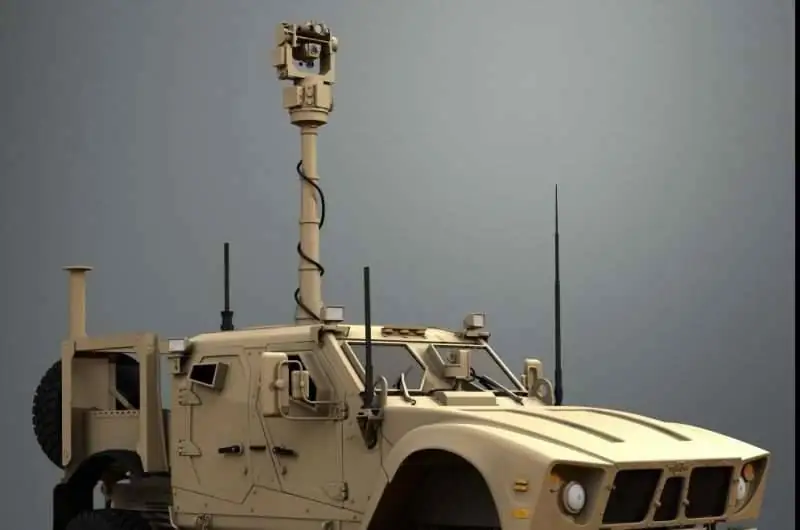
Venom's LLDR technology mounts on a versatile gyro-stabilized platform
To this must be added a possible concept of combat use. “The problem with small UAVs is that they can take off and land in the area you want to protect. For example, from the point of view of warfare, you must always defend the front - you do not want an enemy vehicle that is not yet over your head to fly into your territory. And if we talk about ensuring national security, then in this case, small UAVs may already be in the area that you want to protect,”Carney said.
While the emphasis in countering UAVs is on tackling the threat of individual drones, the sophisticated “pack” attacks developed by the military can potentially pose significant challenges to defense systems.
Many of the proposed solutions include the ability to detect and track multiple targets. But the main difficulty, most likely, will be to prevent dozens of drones from reaching their target. Even with a sufficient number of neutralizing elements, the defenses can be “breached” simply by superior numbers, especially if the flock is “smart” and can adapt to the reaction of the defensive systems.
The physical nature of the proposed and developed solutions is also likely to play a significant role in determining their effectiveness. Due to the high maneuverability of threats, due to the fact that they are not tied to certain places (even tactical UAVs can work with minimal infrastructure), defense systems should also be equally mobile and this should be taken into account. For example, large systems such as Saab's Giraffe radars can be installed in vehicles to increase mobility. In general, many of the developed complex solutions were originally designed to be transported, configured and assembled with a minimum number of personnel.
“A key feature of our AUDS system is that it deploys quickly and simply rolls up and redeploys without issue, that is, fold it onto a vehicle and quickly transfer it to another position. Not one part of it weighs more than 2.5 kg, - said Redford.
The relatively small distances between the launch of the drone and the place of its neutralization are also taken into account. “We assumed a few years ago, when we started developing our system, that these highly maneuverable threats could be neutralized with highly maneuverable and mobile means … the distances are close and any destruction will take place at most several kilometers, sometimes several hundred meters, and therefore you do not need expensive funds. large and stable. I think this is a negative factor in this kind of war,”said Mr. Sella from RADA Electronic Industries.
conclusions
The threat posed by UAVs deployed by terrorist groups and other illegal organizations is now widely recognized. Civilian and military targets can be attacked by drones, it can be an attack against infrastructure or the delivery of toxic substances or a simple "primitive strike".
On the battlefield, military forces may no longer rely on being the sole drone operator as more highly effective systems emerge among rebel groups and other paramilitary organizations.
In both areas - national security and battle formations - effective anti-UAV measures are currently considered an integral part of the overall strategy. Their implementation is still at the stage of comprehension and comprehension. The simplest and most reliable solution (at least for the near future) is to use and modify systems designed for other purposes. However, in the distant future, as the threats become more complex, it may become necessary to further develop special technologies for combating unmanned aerial vehicles.






